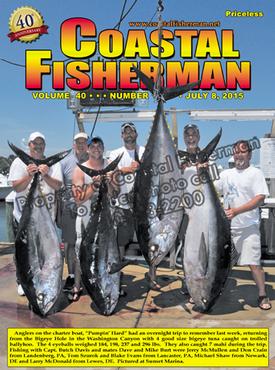


Article by Capt. Steve Katz
 Hello to Halo
Hello to Halo
Simrad recently announced a new open array radar line, called Halo. While marine electronics manufactures seem to announce new products right after you bought your system, this time there is a lot more to the Halo radar announcement than you might realize. We will review the technology behind marine radars and learn why Halo is the first of what may be a significant step forward in marine radars.
Traditional marine radar has remained basically the same since its introduction into the recreational marine market. It has been a pulsed based system, using high power, short duration, fixed frequency pulses to detect targets. To simplify the above, the marine radar signals are similar to you shouting into a mountain canyon and listening for your echo. The marine radar antenna sends out a radio wave through the antenna and then “listens” to see if that signal (echo) is reflected back to the antenna. If the antenna receives a signal, the radar then calculates the time it took for the signal to make a round trip and the rotational position of the antenna to determine range and bearing of the object. Marine radar range is generally line-of sight (due to the typical recreational marine radar frequencies), though atmospheric conditions can extend or reduce the range on any given day. Traditional pulse marine radar uses a magnetron – a device that generates the high power pulsed radio waves and has a useful life of 2,000 to 5,000 hours before it needs to be replaced. As a side note, decreased long range radar reception is often a symptom of a weakening magnetron. While you may see marine radar in a dome or open array, they both work similarly, with the open array able to send a much narrow beam, allowing more precise echo returns that result in a more detailed view on the screen. Traditional marine radars are measured by power output and antenna size; with normal power ratings from 2kW to 25kW (kilowatt) and antenna sizes from 18-inches to 6-feet. Yes, a bigger antenna and more power is better for most situations.
While not considered a next generation but a major step forward, most radar manufacturers began offering digital radar years ago. They combined modern digital signal processing with the tradition magnetron pulse based radar. This system vastly improves the traditional radar by better defining the returns and providing better user controls to fine tune the system to varying conditions. This also resulted in color radar display that is much easier to interpret than the original monochrome green screen radars.
As digital technology evolved in the military and commercial radar markets, it trickled down to the recreational marine radar market. The next generation of marine radars, first introduced by Navico in 2008 (BR24), do not use a magnetron, they are Frequency Modulated Continuous Wave (FMCW) radars that operate with very low power, 165mW for the Navico 4G, but transmits this low power for a much longer duration than the traditional pulse based radar, often resulting in more total power on a target than pulse radars. This solid state radar incorporates digital processing to generate the image you see on the screen. It turns out this lower power output is not a big issue until you need long range radar. As an example, the Simrad 4G radar is marketed as 36-mile radar but it’s superior resolution and advantages over pulse based radars are at the closer ranges. The Simrad 4G FMCW radar can be compared to a traditional pulse based 2kW but with more detailed target separation. Other manufacturers offer solid state radars (without magnetrons), but those products are generally geared toward the commercial market.
If the technology here sounds familiar, it is similar to how CHIRP fishfinders work. Both system use lower power over a long period of time and can “sweep” multiple frequencies to develop a detailed image of their environment.
The recent announcement by Navico/Simrad about their Halo radar explains that they have combined the best of pulse radar and FMCW radar to come up with new radar that has great, close-in target separation and a much better long range performance, similar to a pulsed 6kW radar, while only transmitting 25 watts. The design for the new Halo did not come quickly; Navico spent $15 million over 10 years in developing the Halo radar in their New Zealand R&D facility. There are a few technologies that have recently become available at costs that have allowed Simrad to offer this radar to the recreational marine market. The first technology piece is X band pulse compression which has only been available outside the military for the last 5 years or so. The second technology piece is the affordability of Gallium Nitride (GaN) power amplification devices. This lower cost is a result of their high volume usage in modern cellular telephone systems. The third technology making Halo radar available to recreational boater is the field-programmable gate array (FPGA), which is an integrated circuit that can process a huge amount of data generated by the Halo radar. These technologies allow the Halo radar to transmit bursts of different length pulses, up to 6 at the maximum range to accurately capture objects at all ranges at the same time. The digital processors then stitch the multiple images of the 6 pulses together to display a screen view with incredible detail at all distances. This technology is like having 6 radar ranges displayed at once. The Simrad Halo line-up offers three Halo radars, 3-foot, 4-foot and 6-foot open arrays to fit most boats and they even added blue LED accent lighting in the pedestal. Halo radar currently works exclusively with the Simrad NSS evo2 and NSO evo2 chartplotter systems with costs beginning at $4,500.
Captain Steve Katz is the owner of Steve’s Marine Service and holds NMEA, AMEI and NMEA2000 certificates along with ABYC Master Technician certification and factory training from many manufacturers.